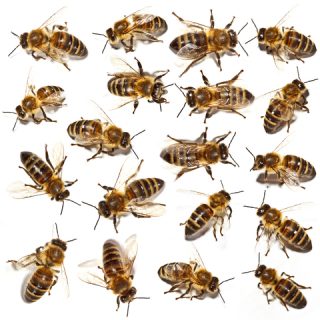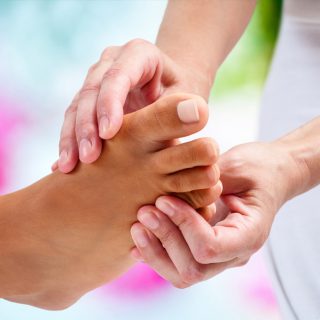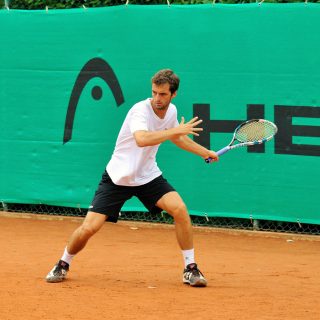It’s an exciting time for running with the climate so pleasant “ and it™s time for the annual Wadi Bih run on 8th February! Here are some foot related tips on what to look out for when it comes to running the Wadi Bih, and trail running generally.
Wadi Bih involves running outside on uneven terrain and running up and down steep inclines, which is quite different to the usual type of running you may be familiar with in training in Dubai which will be mostly flat and paved. This places extra strain on your joints and muscles on your lower limbs, to maintain your balance and forward momentum along the trail run.
Ankle injuries affecting your ligaments are extremely common when you are not used to running outdoors on uneven terrain and wearing the wrong type of running shoes.
Footwear
Ideally your running shoes should be suited for the type of run you are about to undertake. Trail or off road runners should have a deeper tread on the sole to increase grip of the grounds surface. Also when running and landing on your foot, your muscles work harder to keep your knee stable and prevent your ankle from rolling inwards. Therefore make sure your trail running shoes are firm and supportive at the sides, which will create further ankle support.
Preferably your running shoes should be a half size bigger from your non sports shoes. Your feet elongate when running, and if you do not accommodate this, you may experience nail damage; blood blisters underneath the nail plate and/or nail(s) falling off. If you do suffer from this post run, it is best you have this seen by a podiatrist as soon as possible. If left, the blood hardens and may cause discomfort and complete lifting up of the nail from the nail bed.
Foot preparation tips If you are running in a team, each member will run for 15km. Long distance running can result in blisters and knee pain (due to repetitive strain), especially if you are not used to running 15km in this type of challenging terrain.
Always prepare yourself for this eventuality and organize a team first aid kit, including Plasters, antiseptic wipes and ointment and bandages.
If you are prone to, or suspect you may get blisters on your foot, prevention is the best method. Sports tape or zinc oxide tape can be very beneficial to use before the run, and apply it to the hot spot areas prior to running or as soon as you feel heat developing to an area. Make sure you apply it on to clean dry skin.
If you suffer from sweaty feet and tape/plasters come of easily, here is our little tip Friars Balsam. Friars Balsam is found in most pharmacies and come in a brown liquid form apply some onto cotton wool, rub it over the areas you will be applying the sports tape/plasters. Wait for it to dry, the skin should be sticky and then apply tape/plasters “ this will ensure much better adhesion of the plaster/taping.
And of course stay well hydrated throughout, bring the sunscreen and enjoy the run!
Need advice/help post-run? If you do suffer from any new aches/pains or trauma to your feet and lower limbs after the run, call us on 04 3435390 and we can help!
مسار الجري في شاطئ الوادي
إنه وقت مثير للجري مع مناخ لطيف للغاية – وحان الوقت لسباق وادي بيه السنوي في ٨ فبراير! فيما يلي بعض النصائح المتعلقة بالقدم حول ما يجب الانتباه إليه عندما يتعلق الأمر بتشغيل وادي بيه والجري بشكل عام.
يتضمن وادي بيه الجري في الخارج على تضاريس غير مستوية والجري صعودًا وهبوطًا على المنحدرات الشديدة، وهو أمر يختلف تمامًا عن نوع الجري المعتاد الذي قد تكون معتادًا عليه في التدريب في دبي والذي سيكون في الغالب مسطحًا ومعبدًا. وهذا يضع ضغطًا إضافيًا على مفاصلك وعضلات أطرافك السفلية، للحفاظ على توازنك وقوة الدفع للأمام على طول المسار.
تعد إصابات الكاحل التي تؤثر على الأربطة شائعة للغاية عندما لا تكون معتادًا على الجري في الهواء الطلق على أرض غير مستوية وارتداء نوع خاطئ من أحذية الجري.
الأحذية
من الناحية المثالية، ينبغي أن يكون حذاء الجري الخاص بك مناسبًا لنوع الجري الذي أنت على وشك القيام به. يجب أن يكون لدى عدائي الطرق أو الطرق الوعرة مداس أعمق على النعل لزيادة الثبات على سطح الأرض. وأيضًا عند الجري والهبوط على قدمك، تعمل عضلاتك بجهد أكبر للحفاظ على ثبات ركبتك ومنع كاحلك من التدحرج إلى الداخل. لذلك تأكد من أن حذاء الجري الخاص بك ثابت وداعم من الجوانب، مما سيوفر المزيد من الدعم للكاحل.
من الأفضل أن يكون حذاء الجري الخاص بك أكبر بنصف مقاس من حذائك غير الرياضي. تتطاول قدماك عند الجري، وإذا لم تستوعب ذلك، فقد تتعرض لتلف الأظافر؛ بثور دموية تحت صفيحة الظفر و/أو سقوط الظفر. إذا كنت تعاني من هذه المشكلة، فمن الأفضل أن تقوم بفحصها من قبل طبيب الأقدام في أقرب وقت ممكن. إذا تركت، يتصلب الدم وقد يسبب عدم الراحة ورفع الظفر بالكامل من فراش الظفر.
نصائح لإعداد القدم إذا كنت تركض ضمن فريق، فسيركض كل عضو لمسافة ١٥ كيلومترًا. يمكن أن يؤدي الجري لمسافات طويلة إلى ظهور بثور وألم في الركبة (بسبب الإجهاد المتكرر)، خاصة إذا لم تكن معتادًا على الجري لمسافة ١٥ كم في هذا النوع من التضاريس الصعبة.
قم دائمًا بإعداد نفسك لهذا الاحتمال وقم بتنظيم مجموعة الإسعافات الأولية للفريق، بما في ذلك اللصقات والمناديل المطهرة والمراهم والضمادات.
إذا كنت عرضة للإصابة بالبثور على قدمك أو تشك في إصابتك بها، فإن الوقاية هي أفضل طريقة. يمكن أن يكون الشريط الرياضي أو شريط أكسيد الزنك مفيدًا جدًا للاستخدام قبل الجري، ثم ضعه على مناطق “النقاط الساخنة” قبل الجري أو بمجرد شعورك بتطور “الحرارة” إلى منطقة ما. تأكد من تطبيقه على بشرة نظيفة وجافة.
إذا كنت تعاني من تعرق القدمين ويمكن التخلص من الأشرطة اللاصقة/اللصقات بسهولة، فإليك نصيحتنا الصغيرة¦ Friars Balsam. يوجد بلسم الإخوة في معظم الصيدليات ويأتي في شكل سائل بني – “ضع القليل منه على الصوف القطني، وافركه على المناطق التي ستضع فيها الشريط/اللاصق الرياضي. انتظر حتى يجف، يجب أن يكون الجلد لزجًا ثم قم بوضع الشريط اللاصق/اللاصق – “سيضمن ذلك التصاق أفضل بكثير لللاصق/الشريط اللاصق.
وبالطبع حافظ على رطوبة جسمك طوال الوقت، وأحضر واقي الشمس واستمتع بالجري!
هل تحتاج إلى نصيحة/مساعدة بعد التشغيل؟
إذا كنت تعاني من أي آلام/أوجاع جديدة أو صدمة لقدميك وأطرافك السفلية بعد الجري، اتصل بنا على ٠٤٣٤٣٥٣٩٠ ويمكننا مساعدتك!


 As we discussed in our first part of our Diabetic Foot Blog, foot complications can, unfortunately, be a common side effect in Diabetes. Peripheral Vascular Disease (damage to the large blood vessels of the foot/leg) and Neuropathy (damage to the nerves) can be caused by poor blood glucose (sugar) control and other life style factors. The good news is that side effects need not occur at all, or can be managed, by controlling your Diabetes.
As we discussed in our first part of our Diabetic Foot Blog, foot complications can, unfortunately, be a common side effect in Diabetes. Peripheral Vascular Disease (damage to the large blood vessels of the foot/leg) and Neuropathy (damage to the nerves) can be caused by poor blood glucose (sugar) control and other life style factors. The good news is that side effects need not occur at all, or can be managed, by controlling your Diabetes.



